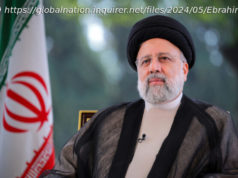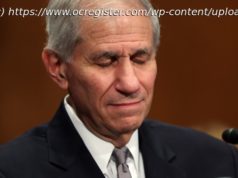The merger of two neutron stars tops WTOP’s Greg Redfern’s list of biggest space news of the year. Read about other honorable mention space stories of 2017.
WASHINGTON — Picking the “Top Space Story” is my favorite annual task as a reporter, as it forces me to look back upon the astronomical and space exploration accomplishments for the year.
This year really had some competition but one story rose above all the rest — the merger of two neutron stars.
This year’s pick is closely related to last year’s and shows how refined our ability to detect gravitational waves is becoming. There are now three gravitational wave observatories in the world and they are currently undergoing further upgrades to make them even more sensitive. I think the next big thing in gravitational-wave astronomy will be our detection of gravitational waves from the Big Bang, the event that brought our universe into existence. That may be years away and require space-based gravitational wave assets.
I feel compelled to add two other honorable mentions this year, my No. 2 and 3 picks.
In October 2017, astronomers discovered what they thought was an asteroid. But upon calculating its orbit they were stunned to learn that this was no ordinary asteroid — it originated from outside our solar system. Named Oumuamua (OH’-moo-ah-moo-ah), which in Hawaiian means “a messenger from afar arriving first,” this interstellar interloper also had another surprise in store for astronomers: it was shaped unlike any known asteroid in our solar system.
Oumuamua was long and slender and rather large. There was some speculation that this could be some sort of artifact from an alien civilization, perhaps a spaceship. Discussion about its actual composition and designation, whether it’s an asteroid, comet or alien artifact, is still ongoing. Follow-up observations were made and published papers as to the results will be forthcoming. The Green Bank Radio Telescope in West Virginia even listened to see if any signals were coming from Oumuamual; to date, none have been reported.
Truth be told, this would probably be everyone’s top pick of the year, as an estimated 200 million-plus people saw this celestial spectacle with their own eyes. NASA geared up in a big way for the eclipse by conducting a multitude of observations by aircraft, spacecraft and ground-based assets. NASA also provided extensive public outreach about the eclipse. I saw it in Cookeville, Tennessee, and it was wondrous. I look forward to my third total solar eclipse somewhere in the future.
Speaking of NASA, here’s NASA’s review of 2017 and what is coming up for the agency in 2018. It is also worth highlighting what is going on with NASA’s Commercial Crew Program, which will finally launch astronauts to the International Space Station using U. S. assets and no longer be solely dependent on Russia.
As you can see, 2018 already has a lot of potential candidates for top pick stories. Perhaps it will be one of them or maybe the universe will conjure up something on its own… only time will tell.
Have a marvelous and safe New Year’s celebration!
Follow Greg on Twitter @skyguyinva and his daily blog to keep up with the latest news in astronomy and space exploration. Email him at skyguyinva@gmail.com.
Like WTOP on Facebook and follow @WTOP on Twitter to engage in conversation about this article and others.
© 2017 WTOP. All Rights Reserved.






